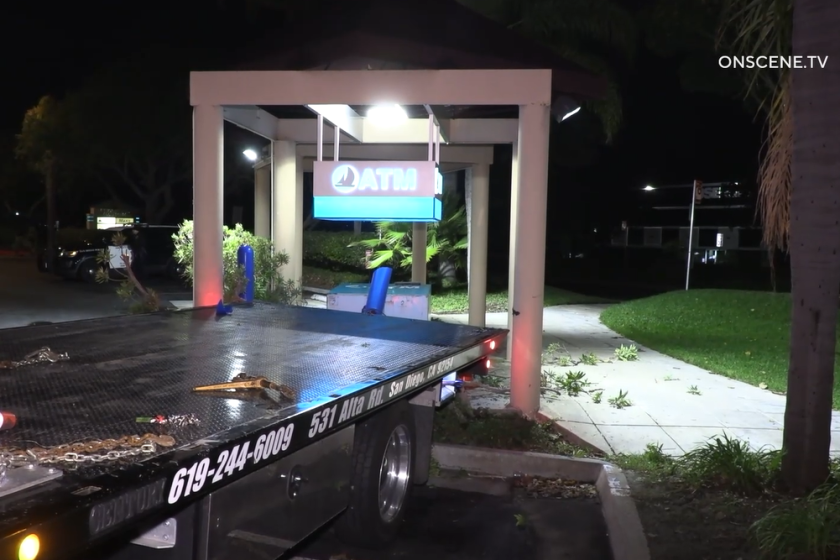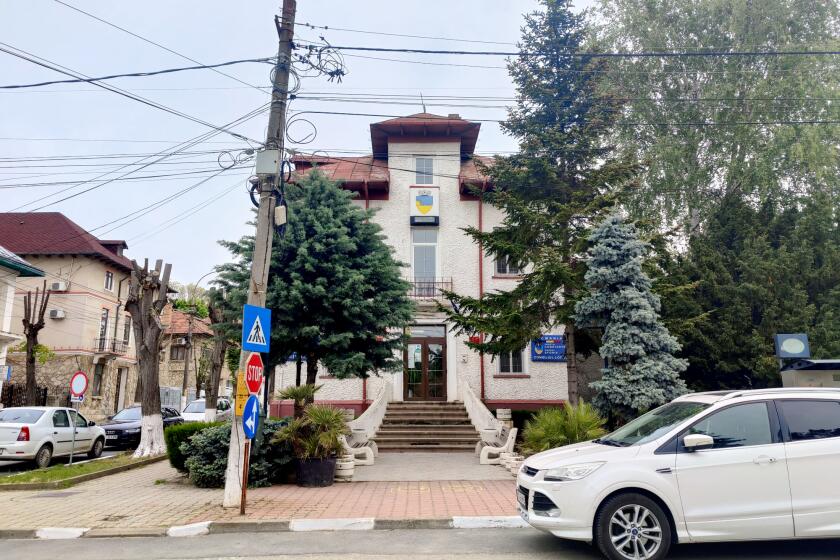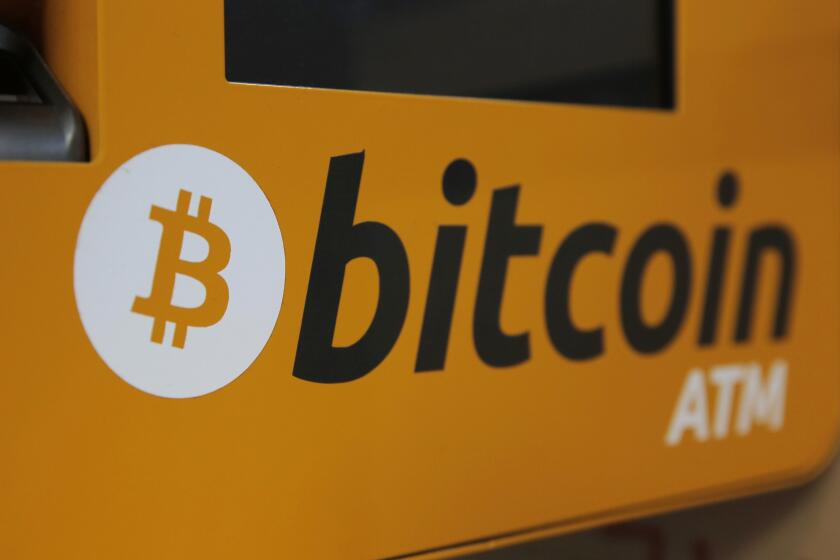Five people crashed into a CVS and stole its ATM. Itâs more common than you think

On Friday, a car crashed through the front door of a CVS pharmacy in San Francisco. Five occupants jumped out, making a beeline toward their target: the branchâs ATM.
The quintet made off with the machine, and the cash inside, fleeing the scene in a different vehicle, according to authorities. No arrests have been made.
Police say the theft at the 300 block of 32nd Avenue, though brazen, is hardly unique. Authorities have noted an uptick in thefts targeting ATMs â with perpetrators sometimes lifting the machines entirely, or using items such as a hook and chain to rip them open.
From January to November, San Francisco police noted 11 crimes specifically related to ATMs, including the theft of a physical machine, department data show. The Times requested similar statistics for 2021 and 2022, but those figures were not immediately available.
The enterprising individual backed the tow truck up to the ATM in a strip mall parking lot but was unable to leave with the machine, police said.
According to the available data, the incidents arenât isolated to one area of the city, said police spokesperson Allison Maxie.
Nor are they limited to a particular business. Several Bay Area media outlets reported ATM thefts in September, October and November in various locations â including drugstores, banks and small businesses.
Someone might be tempted to physically steal an ATM or break into the machine because âthe reward is big and the penalties for most criminals are minimal,â said David Tente, an executive director of the ATM Industry Assn., a trade group that also compiles crime trend analysis reports.
Nationwide, about 80% of all ATM attacks are physical, such as stealing the physical machine or the cash from it, Tente said.
âIn California, there is a lot more card skimming â theft and fraud rates are almost equal,â he said. âPhysical attacks have a slight edge right now.â
California has lost more than $86 million in pilfered food stamps and cash aid since November 2021, according to data provided by counties to the state.
Skimming is when a device is illegally installed on an ATM or other point-of-sale terminal to capture credit card information.
A recent report from ABA Insurance Services noted a continued upward trend in ATM-related claims, with nearly 50 in 2022, up from 30 in 2021 and fewer than 10 in 2020. The claims were reported in 22 states, with the greatest number of filings coming from Texas, Louisiana, Mississippi and Georgia.
The most common kind of ATM theft, according to that report, is the âhook and chainâ method, âwhere thieves rip an ATM open with a hook and chain attached to a large vehicle.â In other cases, like last week in San Francisco, vehicles are being used to breach a facility to gain access to a machine inside.
âThese crimes are prolific because they are profitable and easy to conduct,â the report states.
The location of an ATM could make it vulnerable. Tente said an ATM next to the front window of a store can be quickly hooked and dragged outside, while those located at the back or on the other side of aisles of merchandise could take longer to move.
California is capping crypto ATM transactions and fees along with creating new licensing requirements for digital financial asset businesses.
Available data do not outline how much is stolen in a typical ATM theft. Those operated by large banks will usually have more cash, but at some point most machines are near empty, Tente said. The amount of cash a machine has will also depend on how often itâs used, since busier ATMs need larger reserves, he said.
There are a number of possible features that can be used to deter ATM theft, experts say. An independent deployer, a nonfinancial institution that owns and operates the ATM, can outfit the machine or its money-storing cassettes with a GPS tracker. Tente said the trackers are triggered the second the ATM is moved.
If an ATM has a tracker, he said, law enforcement often can get to the stolen machine in time to recover some or all of the cash.
Banks in the United States are also now starting to deploy ink-staining technology, so if an ATM is tampered with, all the banknotes inside are stained with ink and become worthless, he said.
More to Read
Sign up for Essential California
The most important California stories and recommendations in your inbox every morning.
You may occasionally receive promotional content from the Los Angeles Times.













